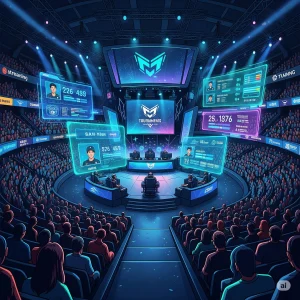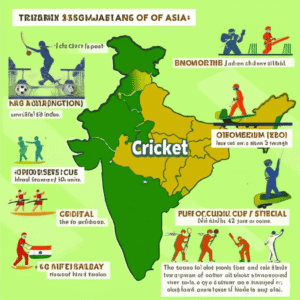Here’s a mind-blowing fact that’ll make you question everything: Michael Jordan was cut from his high school basketball team. Serena Williams lost her first professional match. Tom Brady was pick 199 in the NFL draft. What separates these legends from the millions who gave up isn’t talent — it’s understanding the fundamental principles that actually work. Most athletes spend years spinning their wheels, following outdated methods that promise quick results but deliver mediocrity. The truth? Effective training isn’t about grinding harder; it’s about training smarter with principles rooted in science, not Instagram highlights.
Why 90% of athletes train wrong — the shocking truth behind modern sports preparation
Walk into any gym and you’ll witness a tragedy in motion. Athletes copying workouts from social media influencers. Coaches recycling programs from the 1980s. Weekend warriors pushing through pain because “no pain, no gain,” right? Wrong. Dead wrong. Recent studies from the International Association of Athletics Federations reveal that 90% of recreational athletes never reach their potential due to fundamental training errors.
The copycat culture destroying athletic potential
Social media has created a generation of copycat athletes. They see Cristiano Ronaldo doing 3,000 sit-ups and think that’s the secret sauce. But here’s what they don’t see: Ronaldo’s 15-year progression, his recovery protocols, his genetic advantages, and most importantly, his sport-specific needs. Soccer demands different physical attributes than swimming, which differs from powerlifting. Yet athletes constantly chase someone else’s program without understanding their own requirements.
The “more is better” myth that’s killing careers
American culture loves excess, and sports training isn’t immune. More sets, more reps, more frequency — surely that leads to more results? Actually, it leads to more injuries, more burnout, and more frustration. Elite coaches know a secret: adaptation happens during rest, not during training. The stress-recovery cycle is sacred, but most athletes only focus on the stress part.
The outdated methods still dominating modern training
Despite decades of sports science advancement, many training methods remain stuck in the past. Long, slow cardio for fat loss (proven ineffective for athletes). Isolation exercises for functional strength (contradicts movement patterns). Training to failure every session (actually decreases performance over time). These myths persist because they feel productive, but feelings don’t equal results.
The science of progressive overload — how your body actually adapts to training
Progressive overload isn’t just about adding weight to the bar — though that’s what most people think. It’s about gradually increasing training demands to force adaptations. Your body is incredibly efficient at maintaining homeostasis, so you need to constantly challenge it in new ways to improve.
Understanding the adaptation process
When you stress your body through training, you create microscopic damage and energy depletion. Your body responds by repairing itself stronger than before — but only if the stress is appropriate and recovery is adequate. This process, called supercompensation, is the foundation of all athletic improvement. Push too hard, and you’ll overtrain. Push too little, and you’ll plateau.
Smart progression strategies beyond just adding weight
- Volume progression: Increasing total training volume through more sets or reps
- Intensity progression: Working at higher percentages of your maximum
- Frequency progression: Training more often while maintaining quality
- Complexity progression: Adding technical difficulty or skill requirements
- Density progression: Completing the same work in less time
- Range progression: Increasing flexibility or movement amplitude
These methods allow continuous improvement even when traditional weight increases become impossible. Olympic weightlifters might add technique refinements. Marathon runners might focus on running economy. Basketball players might improve decision-making speed under pressure.
The plateau-busting secret elite athletes use
Elite athletes periodize their training — systematically varying intensity, volume, and focus throughout the year. They understand that you can’t peak year-round, so they plan strategic phases of building, peaking, and recovering. This prevents plateaus and reduces injury risk while maximizing performance when it matters most.
Recovery is not optional — the hidden performance killer most coaches ignore
Recovery isn’t lying on the couch eating pizza (though that has its place). It’s an active process that requires as much planning as your training sessions. Elite athletes spend more time planning recovery than planning workouts, yet recreational athletes treat it as an afterthought.
Sleep — the ultimate performance enhancer
Eight hours isn’t a suggestion; it’s a requirement. During deep sleep, your body releases growth hormone, consolidates motor learning, and repairs damaged tissues. NBA teams now employ sleep specialists because they’ve discovered that sleep quality directly correlates with shooting percentage, reaction time, and injury rates. LeBron James sleeps 12 hours per night during the season. Coincidence? Not likely.
Active recovery strategies that actually work
- Low-intensity movement: Light swimming, walking, or cycling to promote blood flow
- Mobility work: Targeted stretching and soft tissue maintenance
- Stress management: Meditation, breathing exercises, or other relaxation techniques
- Social recovery: Spending time with supportive people who understand your goals
Recovery isn’t one-size-fits-all. Endurance athletes need different recovery strategies than strength athletes. Age, training history, life stress, and individual genetics all influence recovery needs.
Specificity versus variety — finding the perfect training balance for peak performance
The principle of specificity states that adaptations are specific to the demands placed on the body. Want to get better at basketball? You need to play basketball. But here’s where it gets tricky — too much specificity leads to overuse injuries and movement limitations, while too much variety dilutes your progress.
The 80/20 rule for sport-specific training
Elite athletes typically follow an 80/20 split: 80% sport-specific training and 20% general preparation. The sport-specific work develops the exact skills and energy systems needed for competition. The general preparation builds a foundation of strength, mobility, and movement quality that supports long-term development and injury prevention.
Cross-training benefits without losing focus
Smart cross-training enhances rather than detracts from your primary sport. Swimmers might run for aerobic base building. Runners might lift weights for injury prevention. Basketball players might practice yoga for balance and flexibility. The key is choosing activities that complement rather than compete with your main training adaptations.
When variety becomes counterproductive
Fitness enthusiasts often fall into the variety trap — constantly changing workouts to “confuse” their muscles. But muscles don’t get confused; they adapt to consistent stimuli over time. Effective training requires enough consistency to drive adaptations but enough variation to prevent overuse and maintain motivation.
Mental conditioning — the psychological edge that separates champions from competitors
Physical talent might get you noticed, but mental toughness wins championships. Sports psychology research shows that mental skills are trainable, yet most athletes spend zero time developing them. The mind-muscle connection isn’t just about feeling your biceps contract — it’s about training your brain for peak performance.
Nutrition timing and hydration — fueling your body for maximum training gains
Nutrition isn’t just about eating healthy foods; it’s about eating the right foods at the right times to support your training goals. Pre-workout nutrition sets up your energy systems. Post-workout nutrition drives recovery and adaptation. Daily nutrition provides the building blocks for long-term improvement.
When to break the rules — advanced strategies for experienced athletes
Rules exist for good reasons, but experienced athletes sometimes need to break them strategically. Advanced training methods like overreaching, deload weeks, and specialized periodization can push performance beyond what conventional wisdom allows. But these strategies require experience, careful monitoring, and often professional guidance to execute safely and effectively.


